Labiaplasty
Your complete guide and quick links to everything you want to know about Labiaplasty in Sydney!
What is a Labiaplasty?
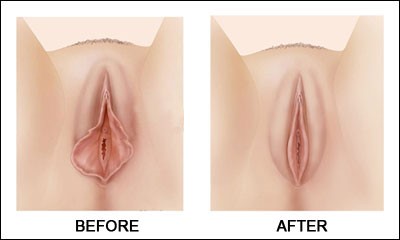
Labiaplasty is a surgical procedure that reduces the size of enlarged inner vaginal lips (the ‘labia minora’) that protrude beyond the extent of the outer lips (the ‘labia majora).
Women may be born with larger than normal ‘labia minora’ or they can develop following childbirth or as part of ageing.
For some women, enlarged, protruding ‘labia minora’ can cause physical symptoms such as irritation or discomfort from tight clothing, exercises, some sporting activities or during intercourse.
Most women seeking a labiaplasty of the labia minora do so either because they suffer from irritation, or they believe that labia minora completely covered by the labia majora are more aesthetically appealing.
Strictly speaking, the term ‘labiaplasty’ can refer to surgery on either the outer vaginal lips or the inner vaginal lips. However, the vast majority of women requesting a labiaplasty are seeking to reduce the size of the inner lips at the entrance to the vagina.
The Different Labiaplasty Techniques
The labia minora are important for maintaining the moisture of the vulva and vagina. Their appearance varies considerably among women in terms of size, colour and shape but in some women, they can enlarge and protrude beyond the labia majora.
Removal of excess labia minora tissue can be performed by any of the following techniques:
1. The Trim Excision Technique
Your surgeon will make one continuous incision along the edge of the protruding labia minora to remove the protruding excess. This technique may be preferred if the patient is also bothered by darker-pigmented skin along the labial edges.
This is the simplest of all three techniques. However, it can leave the edges of the labia with a ‘scalloped’ appearance due to the style of suturing.
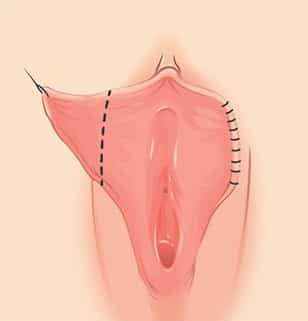
2. The Wedge Excision Technique
In the ‘Wedge Technique’, a full-thickness V-shaped wedge of tissue is removed from the labia. The remaining edges are then sutured to pull the entire length of the labia minora tighter.
Although the final appearance may be more natural-looking than the ‘Trim Technique’, a full-thickness wedge from delicate labial tissue could result in poor healing or thickened scarring that is physically uncomfortable.
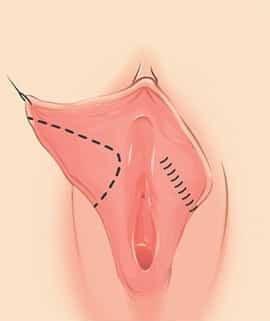
3. Our ‘Swede’ Technique (Superficial Wedge De-Epithelialisation)
If choice permits, our ‘Swede’ Technique may be the preferred method. It produces a very natural appearance while avoiding some of the potential problems of the other techniques.
Unfortunately, the technique is not widely known or practised.
Its main advantages are:
- It delivers a very natural appearance.
- It avoids the potential problems of the other techniques.
- Being only a superficial wedge dissection and not a ‘full thickness’ wedge excision, the blood and nerve supply to the labia are not compromised and normal sensation is preserved.
How Is Labiaplasty Surgery Performed?
For patient comfort and safety, all labiaplasty procedures are performed in a Licensed Day Hospital under General Anaesthesia administered by our Specialist Anaesthetist.
The aim of any Labiaplasty is to reduce the inner labia so they’re level with, or are within, the outer labia.
This will reduce any discomfort as well as limit the amount of tissue that’s visible when standing.
A standard Labiaplasty usually takes 1-2 hours unless it is combined with other procedures.
Whichever technique your doctor uses, all incisions are closed with dissolvable sutures, so there is no need to feel anxious about having sutures removed.
After 1-1½ hours in Recovery, you can return home. However, you cannot go home alone. You must be accompanied by a responsible adult.
Watch Our Labiaplasty Animation Video
Recovery After Labiaplasty
- Plan for an initial recovery period of 3-10 days depending on which technique was used and whether additional procedures were included.
- During this time, you can expect:
- Swelling and bruising
- Discomfort and pain (but manageable with medications)
- Minor spot bleeding
- Urinating and sitting can be uncomfortable during this initial period.
- Your surgeon will provide specific and very detailed instructions about how to care for your labia during the recovery period. It is important you follow these instructions carefully as they will help relieve discomfort and promote quicker healing.
‘Pros & Cons’ of Labiaplasty
The Pros:
- It will reduce the size of the protruding labia minora.
- It can also alleviate physical symptoms such as discomfort and irritation from tight clothing, exercises, sporting activities or during sex.
- Labiaplasty results are permanent. However, remember that your body will continue to change as you age and childbirth can again stretch the labia or change their appearance.
- Labiaplasty can improve genital hygeine. Excess labial tissue can harbour bacteria because of the difficulty of cleaning the skin. This, in turn increases the risk of yeast infections and urinary tract infections.
- Decreasing the size of the labia can make a large difference in comfort if you are very athletic and active in sports.
The Cons:
- You’ll need anywhere from 3 to 10 days of recovery time depending on which technique was used and whether any additional other procedures were included.
- You should not wear tight pants or jeans in the first 2 weeks as they will likely prove uncomfortable and cause irritation.
- It generally takes 3 months for all of the swelling to settle. Full improvement may even take up to 1 year.
- You should not use tampons for the first few menstrual periods after a labiaplasty.
- You should wait for 6-8 weeks until healed before shaving or waxing.
- You need to abstain from vigorous exercise for about 4 weeks and sexual activity for 8 weeks. Otherwise, you may tear the incisions apart, ruin the result and then need to start the entire healing process all over again.
Labiaplasty ‘Before & After’
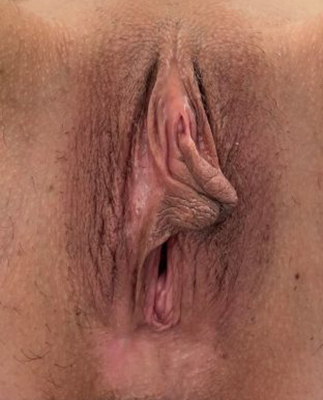
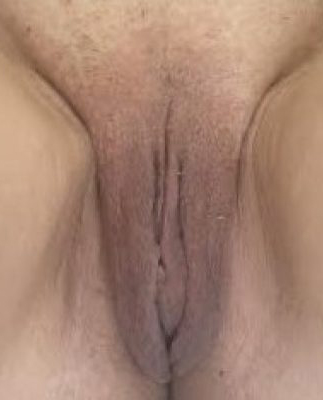
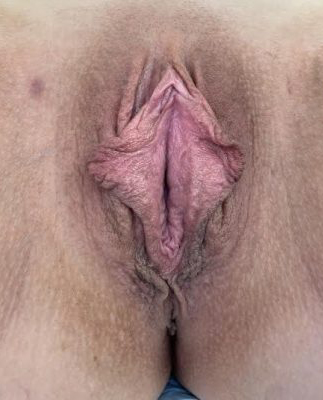
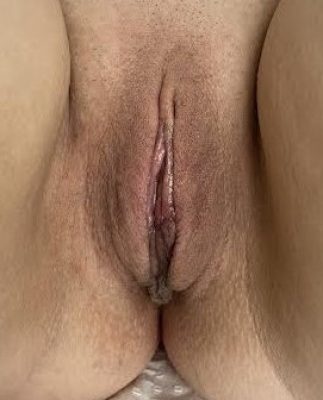
(Some tissue swelling still present)
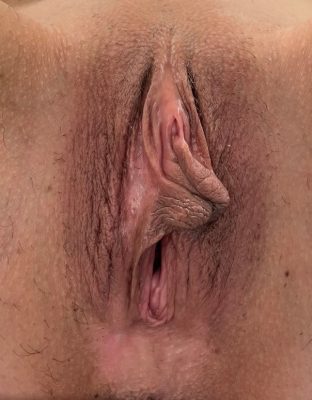
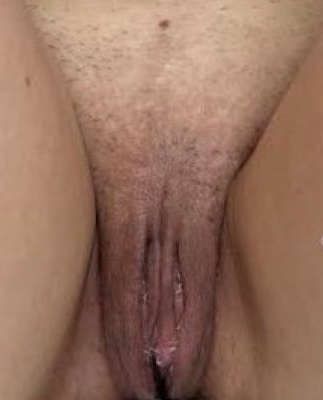
(Some tissue swelling still present)
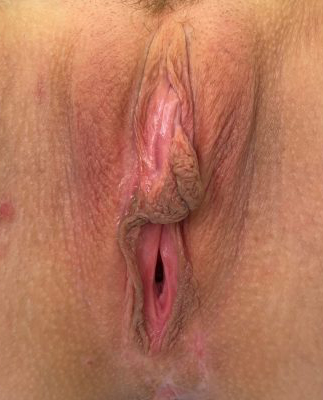
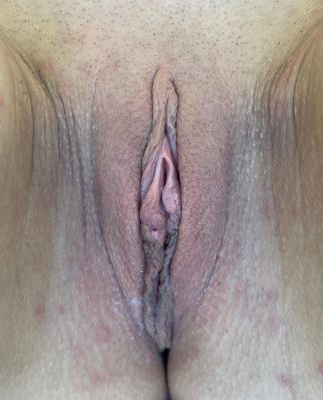
(Some tissue swelling still present)
Potential Risks & Complications of Labiaplasty
Labiaplasty surgery is generally considered safe but like any surgery, potential risks and complications exist and these include:
Specific to Labiaplasty:
- Excessive Bleeding from the operative site.
- Hematoma (a collection of blood under the surface).
- Wound infection.
- Delayed wound healing – more likely in smokers and diabetics.
- Changes in sensation or numbness.
- Asymmetry.
- Abnormal scarring.
- Over-resection or under-resection of the labia.
General Risks:
- Allergic reaction to medications, sutures, dressings, or antiseptic solutions.
- Deep Venous Thrombosis (DVT) and its potential to cause life-threatening Pulmonary Embolism. To reduce the risk of DVT, Calf Massagers can be applied for the entire duration of your surgery to prevent the blood in your leg veins from pooling and clotting.
- Adverse Reactions to Anaesthesia or Medication: The safety of anaesthesia nowadays in Australia is well established. Nevertheless, potential risks exist with all anaesthesia and unexpected reactions can occur. These may include nausea, vomiting, and allergic reactions ranging from minor to severe. Respiratory failure, heart failure, heart attack and stroke are rare but documented risks of any general anaesthesia.
Procedures Sometimes Included with Labiaplasty of the Labia Minora
Labiaplasty to reduce the size of enlarged ‘labia minora’ is sometimes performed in conjunction with other forms of genital surgery, including:
- Labia majora procedures which can be any of the following:
- Liposuction to reduce the prominence of the hair-bearing outer vaginal lips (the ‘labia majora’).
- Fat Transfer to restore lost volume of the outer vaginal lips (the ‘labia majora’).
- Removal of excess skin in deflated and wrinkled outer labia.
- Clitoral Hood Reduction – the removal of excess skin folds over the clitoris to make the area appear less bulky or uncover the clitoris.
- Liposuction of a prominent mons pubis – the triangular mound of fatty tissue over the pubic bone which may be visible when wearing tight pants or swimwear.
Labiaplasty Cost in Sydney

-
Labiaplasty
The total cost of a Labiaplasty in Sydney will depend on the following individual costs.
- Surgical Fee: This will depend on the technique required.
e.g. Standard Labiaplasty …………………………………………. $7,000
- Hospital Fee: Hospitals differ in their hourly rates for Operating Theatres. Our Surgeon will advise you of your hospital costs once it has been determined which hospital you will be attending and how long your procedure will take.
- Anaesthetist Fee: This will basically depend on the duration of your surgery. Anaesthetic Fees are generally around $880/hour.
Can I Claim a Medicare or Private Health Insurance Rebate?
Surgical procedures for purely cosmetic reasons are generally not eligible for a Medicare Rebate.
Unfortunately, only a minority of patients are eligible to claim a partial Medicare Rebate because of Medicare’s strict criteria of eligibility which basically require that the patient’s labia must extend more than 8 cm below the vaginal entrance when the patient is standing.
If you meet the above criteria and you also have Private Hospital Cover, you may also be able to claim a variable portion of your Hospital Fees depending on your Fund and Level of Cover.
